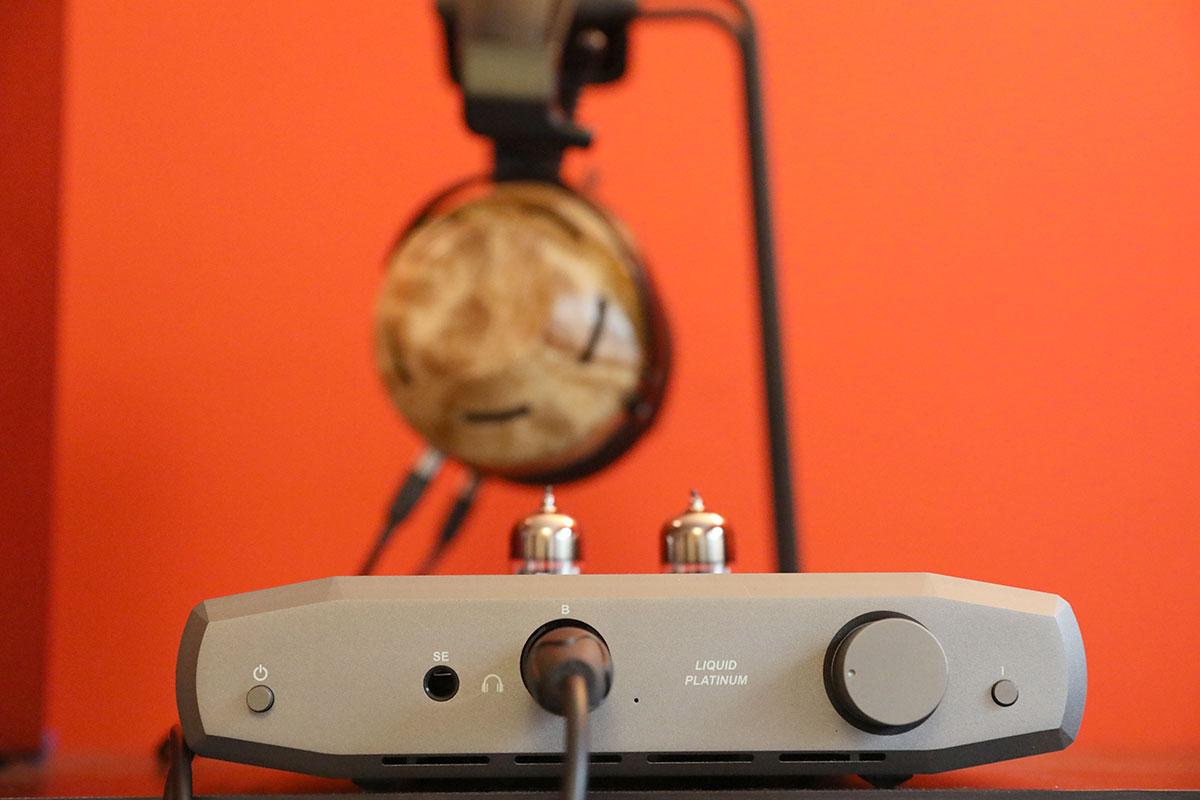
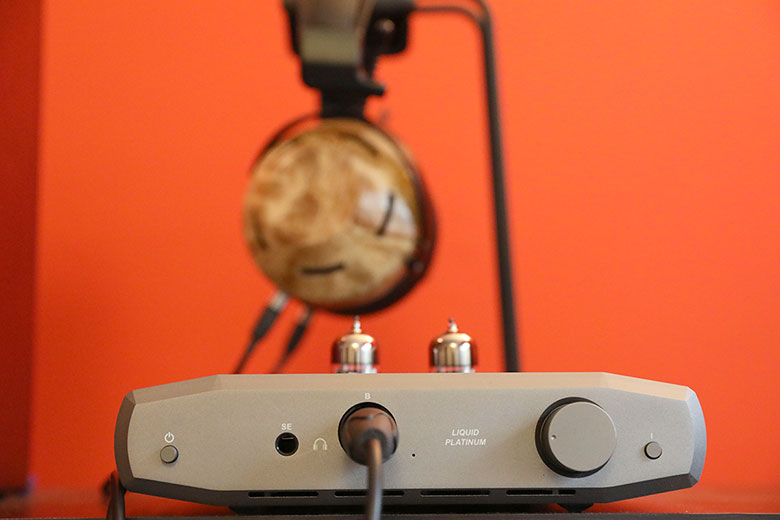
The Master Switch


The Master Switch
DAC: No
Recommended Headphone Impedance: 3-300Ω
Watts Per Channel: 1.78 / 33Ω
What We Like: Elegant sound, good range of inputs, solid build.
What We Don't: Boring design, confusing labels, expensive.
Headphone lovers like to talk about what they call the endgame: a magical combination of amp, DAC, and headphones that delivers the perfect sound, meaning they’ll never need to buy another piece of equipment. But endgame is a myth. It doesn’t exist. Every time you think you have it, a new piece of sparkly equipment comes along that renders it meaningless. So it’s with a significant amount of surprise that we say this now: the Monoprice Monolith Liquid Platinum is as close to an endgame amplifier as we’ve ever seen. In this review, we break down the Liquid Platinum’s sound, design, packaging and accessories, specs and more. To see how it stacks up, check out our list of the best headphone amps.
You’d have to work quite hard to find an amp with a stranger story than the Monoprice Monolith Liquid Platinum. It was designed by Dr. Alex Cavalli, a legend in the audio world. He once created an amp called the Liquid Crimson that’s still spoken about in hushed voices at headphone meetups - the subject of breathless anecdotes and slightly sweaty palms. We confess: we haven’t even seen one, let alone heard it.
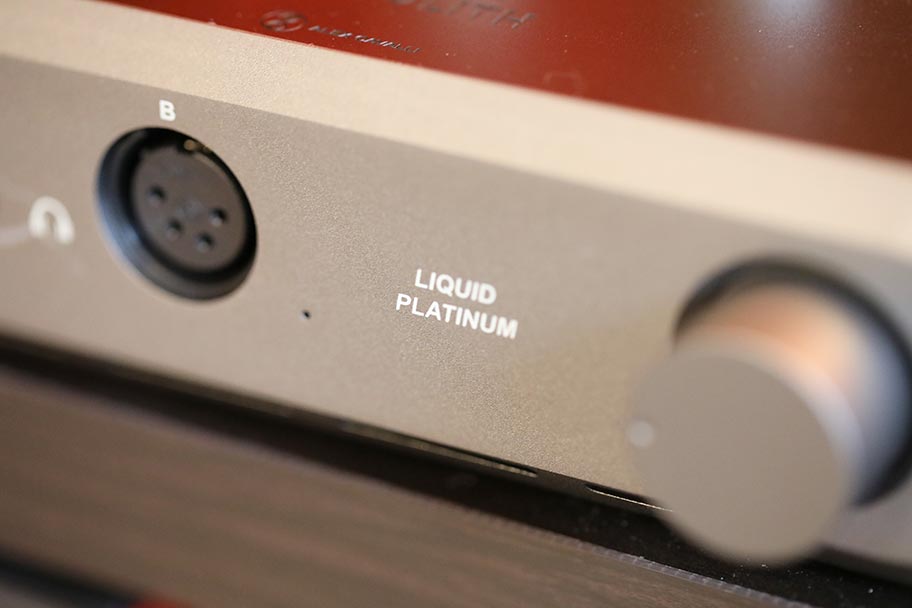
A short while after the Crimson’s release, Dr. Cavalli debuted a more affordable version with similar sound quality: the Liquid Platinum. Before this design could go anywhere, his company Cavalli Audio sadly folded. The Crimson and the Platinum looked as if they would be lost to history. Except, they weren’t - or at least, the Platinum wasn’t. And its saviour came from perhaps the most unlikely source of all.
You may or may not be aware of Monoprice, a Californian company that makes lawn games, wireless chargers, and flashlights, among rather a lot else. They have a corporate identity with as much flair and pizzazz as a bowl of oatmeal. But they do have an audio division. They produce gear that emphasises function over form, and are beyond unimaginative when naming their equipment – if you don’t believe us, then we’d like to show you the Monoprice 9723 subwoofer. If we were going to nominate a company likely to resurrect Cavalli’s masterpiece, Monoprice wouldn’t even be on the longlist. And yet, they did. Against all odds, and in one of the most unlikely couplings we can imagine, the Liquid Platinum is now a Monoprice product. And it is absolutely brilliant.
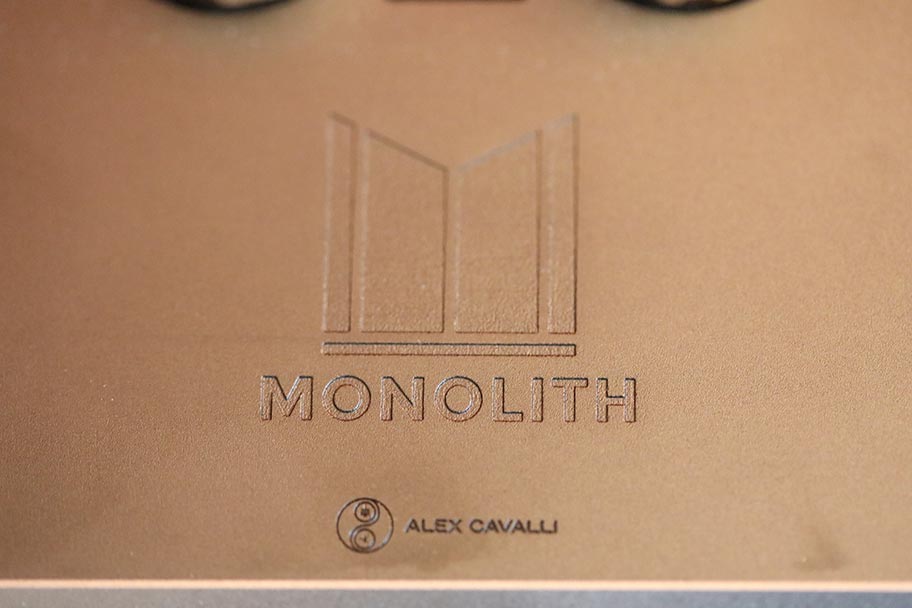
You get a full sense of this in the mid range, especially with elements like vocals. While the Liquid Platinum is a tube amp - we’ll discuss this in a moment – there’s very little of the warm, saturated sound that tube amps are known for. Instead, what you get is subtle detail. It’s not overly neutral or clean, but is elegant and precise. The tubes and the internal circuitry provide some truly beautiful, vivid tones, and the overall sense is that the music you’re listening to is alive. Compare this to the less-expensive Schiit Lyr (full review here), which costs $499 to the Liquid Platinum’s $770. The Lyr can dance if you treat it right, but we’re talking tap. The Liquid Platinum is the Bolshoi Ballet.
None of this is all that surprising. The Liquid Platinum is part of Monoprice’s Monolith line, which gave us products like the Monolith M1060s (full review here) – a set of inexpensive planer headphones that shook the audio world to its core. They may spend a lot of their time dicking around with lawn games and USB cables, but they know what to do with sound. And the midrange isn’t the only thing worth buying a Liquid Platinum amp for; the highs, too, are superb, with intricate detail. Every element is crisply rendered, and feels far more precise than any tube amp we’ve heard – certainly any tube amp in this particular price range. The sound quality of the Liquid Platinum personifies elegance. It’s beautifully assured, confident, and poised. We loved it.
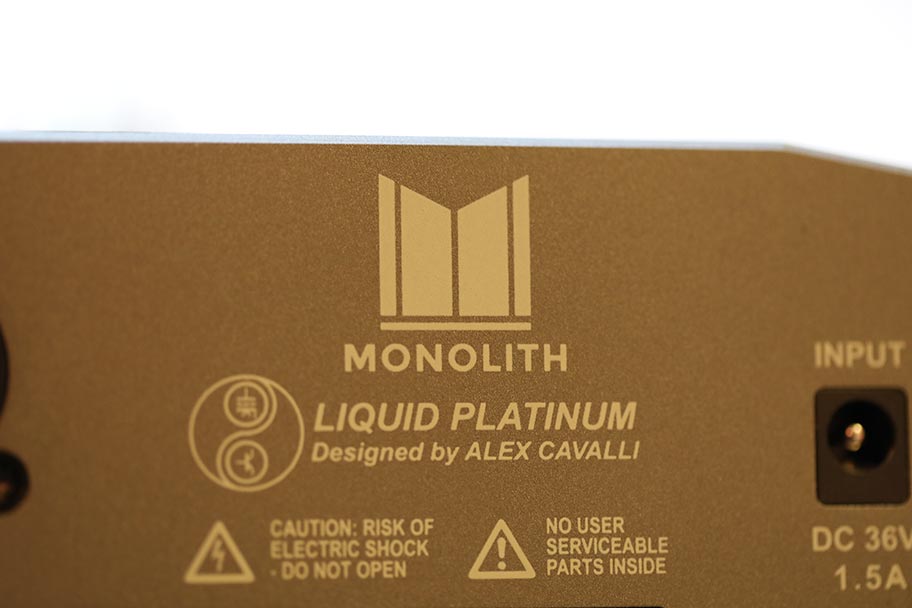
Tube amps are known for their thick, powerful bass. Once you pass an audio signal through a couple of glowing vacuum tubes, the sound tends to get warm and saturated quickly. The Liquid Platinum is a tube amp, running off a pair of 6922 tubes. We won’t go into the esoteric and obscure world of tubes, because we don’t want to bore you that much, but we will say that the 6922 are known for their quality, and have been around since the late 1950s. If you’re into tube rolling – that is, swapping out the tubes for one’s more to your liking – the Liquid Platinum will take any tubes from the 6DJ8 range, which is wide enough to suit all tastes. It is, in fact, a hybrid amp, which makes use of both tubes and solid-state circuitry.
That hybrid quality is most prominent in the low-end. It wasn’t nearly what we expected it to be – that is, warm and gooey. Instead, we got a sense of that elegance and vivacity, although not quite as assured as the midrange. Occasionally, elements felt a little bit stiff and rigid, without the sub-bass slam we would have liked to see. But we felt like this was more of a personal taste than anything else – the bass certainly wasn’t bad, just not quite to our liking. We much preferred the low-end on something like the Burson Fun, a $399 Australian amp with a stupid name but great sound. With that amplifier, you can actually swap out the op-amps - a set of internal components, rather than tubes – which lets you customize the sound.
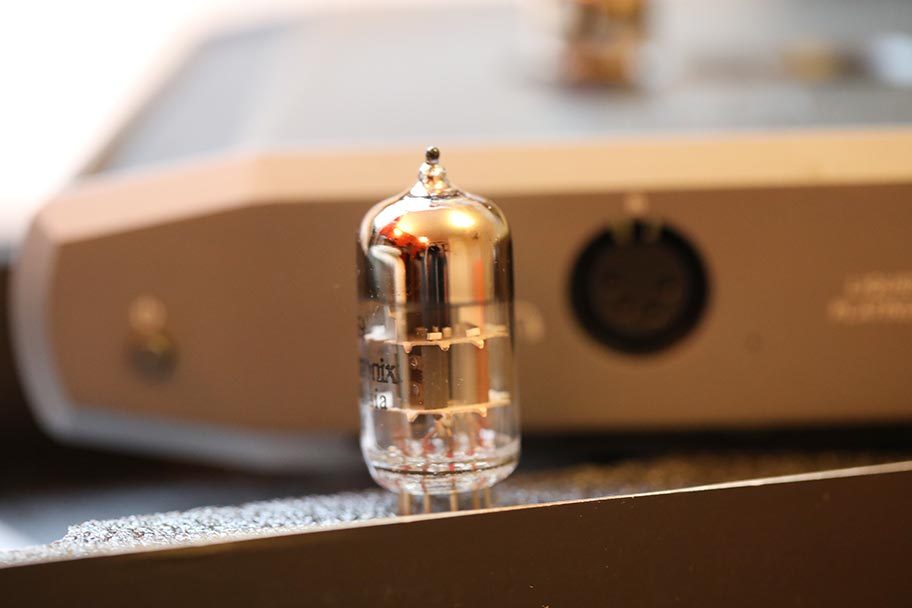
Having such a midrange-focussed sound means that the soundstage of the Liquid Platinum is a little narrower than we would have liked. It still does its job, but you shouldn’t buy this amp looking for a dramatically wide stereo image. Instead, think intimacy. This amp is perfect for music that has vocalists whispering soft nothings into your ear. This is where it really shines, and when you get the full benefit of its engaging audio. It’s a sound profile we’ve heard on far more expensive amps, like the $1,699 Auris Euterpe. The fact that the Liquid Platinum can deliver the same vibe at less than half the price is quite something.
And this is why we come back to the idea of the endgame. We maintain that it doesn’t exist, even for us. As much as we love the Liquid Platinum, another amplifier will come along at some point that makes us start drooling, and which makes Cavalli’s masterpiece feel dated and dull. But right in this particular moment, if we had to pick an endgame amplifier – something that could handle any type of headphone, deliver sound quality that was about as close to perfect as we could imagine, and for an affordable price - we’d pick the Liquid Platinum. It’s that freaking good.
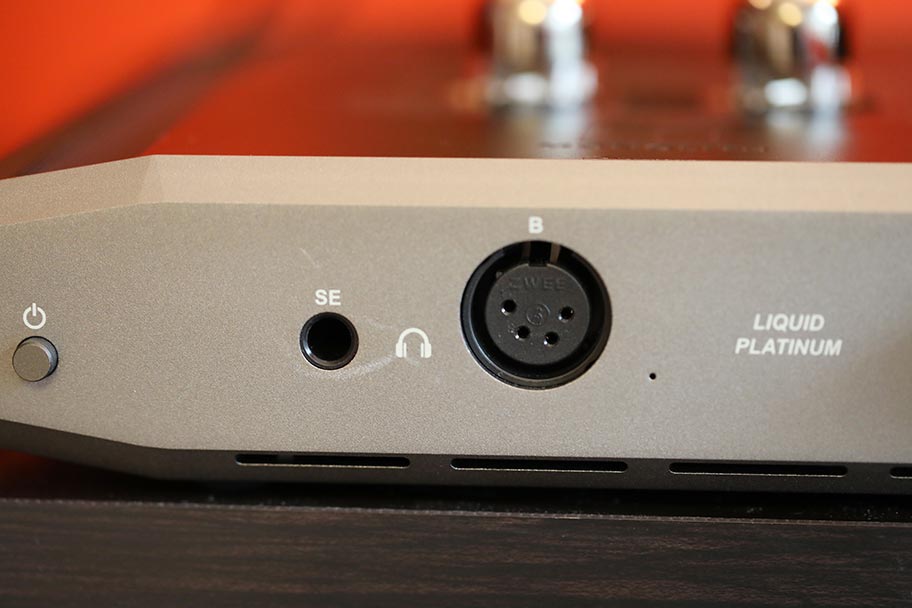
One last word on audio quality. The Liquid Platinum is a fully balanced amplifier. Without diving too deep into the technical aspects of this, which have been the subject of intensely dull debates on many message boards, balanced circuitry in an amplifier is generally a good thing. It reduces noise and interference, and is typically preferable to amplifiers that have unbalanced circuitry. You can usually spot a balanced amplifier because of its oversized XLR headphone output, and Monoprice are very clear in this method. We tested ours with several balanced headphone cables while wired up to the stunning Aeolus and Atticus headphones from ZMF.
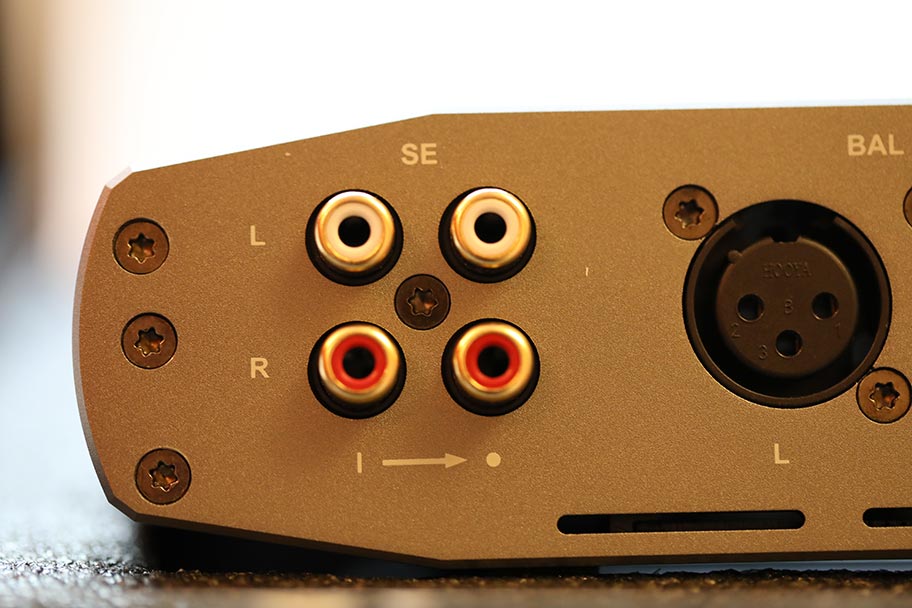
There is also a more common, single-ended 6.3mm output, so you can plug just about any pair of headphones into the Liquid Platinum. For the most part, we don’t think there’s a huge difference between the balanced and single-ended outputs here. Perhaps there’s a touch more subtlety on the balanced, but you aren’t going to lose much detail if you don’t happen to have an XLR headphone cable knocking around. Incidentally, the power output on the Liquid Platinum is substantial - 6.6 watts at 33Ω. That’s more than enough to power even the most demanding headphones, as we confirmed when we tracked down a pair of AUDEZE LCD-4 planar magnetics and spent a couple of hours listening. Why yes, this job is awesome. Thanks for asking.
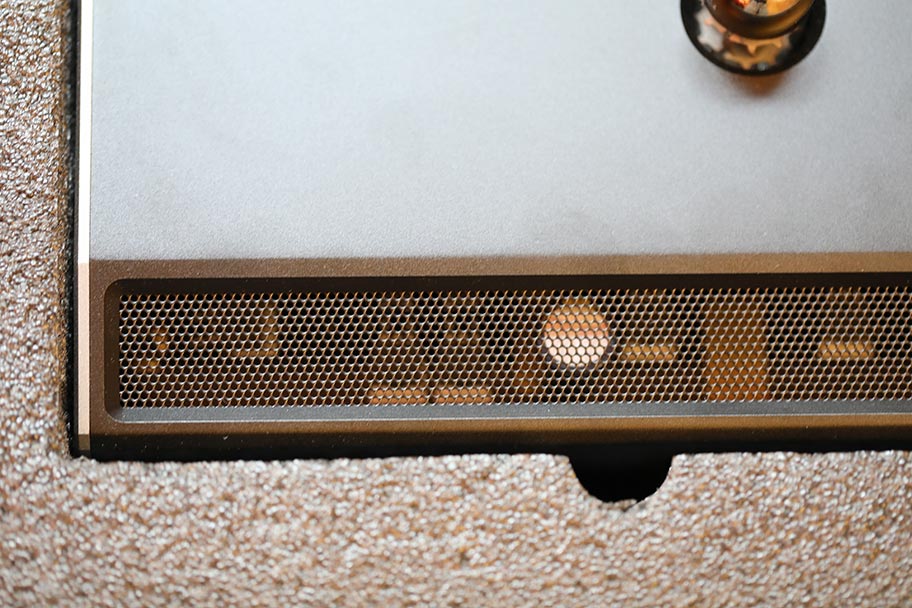
As much as we love the sound of the Liquid Platinum, we feel a bit conflicted about the design. It has a slightly confused quality to it. On the one hand, we love the subtle details. The shape is terrific, with downward-sloped sides, and the gently-angled edges that surround the front control panel are quite striking. We also particularly like what Monoprice have done with the vents, which run along either side on the top of the amp. They work well, and although the tubes get quite hot during use, the amp itself never does. That’s in contrast to several other headphone amps we’ve tested, especially tube ones, which tend to run a bit hot – we’re looking at you, Feliks.
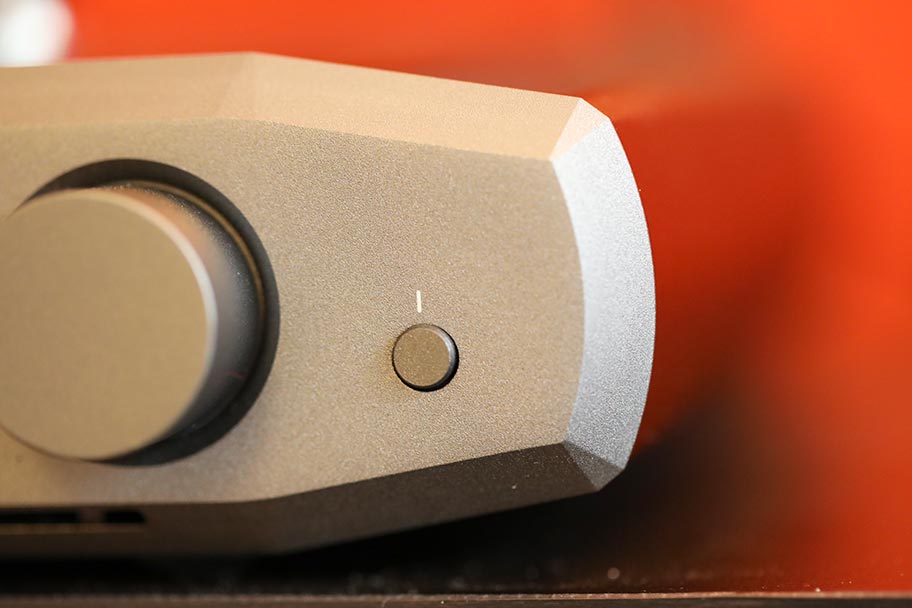
But as good as the design highlights are, it feels like they’ve been stuffed into a big, boring box. The tubes, for example, stick up out of nowhere, marooned in the middle of the housing as if shoved in at the last minute. They are hard to change, too, as their sockets are buried very deep in the circuitry. You’ll have to work hard if you want to swap them out. And the issues go deeper than that. You get exactly one choice of color, which is a festive black and grey. If there was ever an amplifier that was crying out for a little bit of red or gold or navy blue, it’s this one. This is perhaps the biggest disappointment of the Liquid Platinum. Something that sounds so assured should have a bit more confidence in its looks.
At least it’s built well. The big volume knob on the front feels firm and robust, and the two buttons have a good click to them. While we wouldn’t recommend dropping this amp, or any amp, it feels like it could take a beating. This robust quality runs through all of Monoprice’s Monolith products, including the $99 Liquid Spark amp. That amplifier is a much smaller, more compact version of the Liquid Platinum, which offers a taste of the sound without destroying your wallet. Unfortunately, it offers a taste of the design, too.
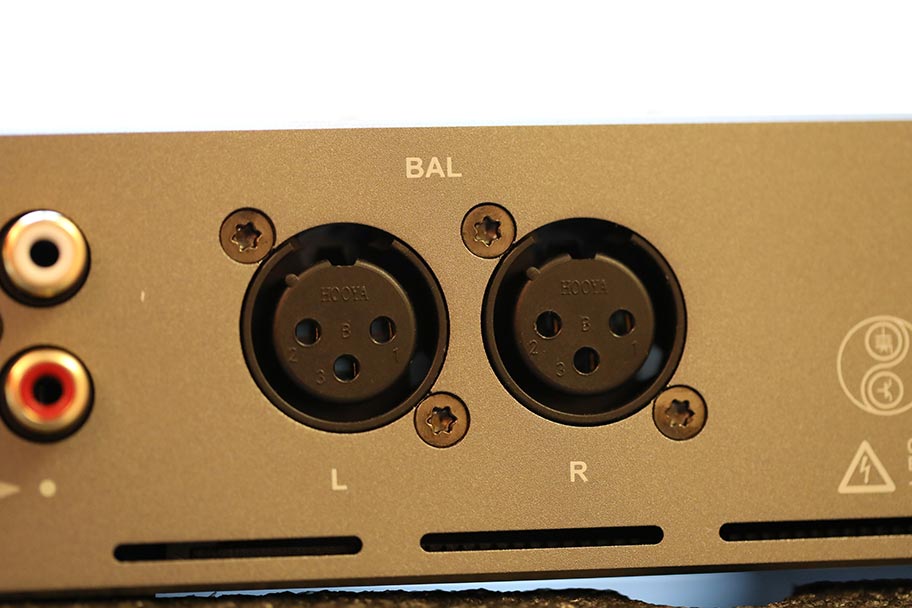
The connections on the Liquid Platinum are simple and effective. On the back of the amp, you get two sets of line inputs, and a single balanced XLR input. As mentioned, there are two outputs on the front of the amp: a 6.3mm single-ended output, and a balanced XLR output. It’s not a good idea to run them both at the same time.
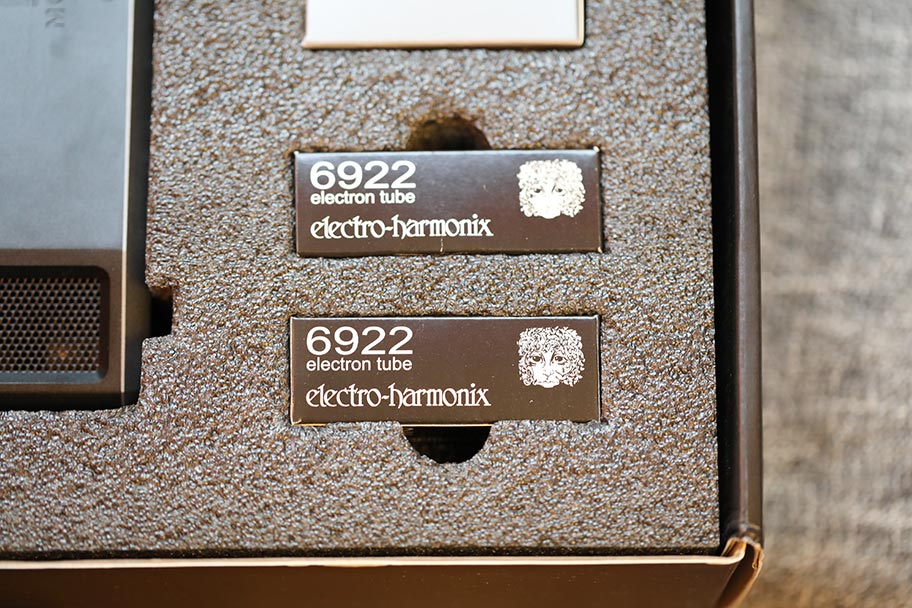
There are aspects of the inputs and outputs that we like, and aspects we do not. In the like category is the little light on the front that turns white when the tubes have reached an acceptable operating temperature. The Liquid Platinum has a delayed startup sequence, which takes about forty seconds, and makes sure that everything is copacetic with the tubes and the circuitry. That’s handy, and we dig it. But here’s something we don’t like: there’s a button on the front that switches line inputs, but it uses a dot and a dash to differentiate them. It’s a small thing, but for some reason, we found it immensely, irrationally irritating. Why Monoprice couldn’t use A/B or 1/2 here, we don’t know. Perhaps for their next amp, they could look to models like the Woo Audio WA11 Topaz (full review here) for inspiration on labeling.
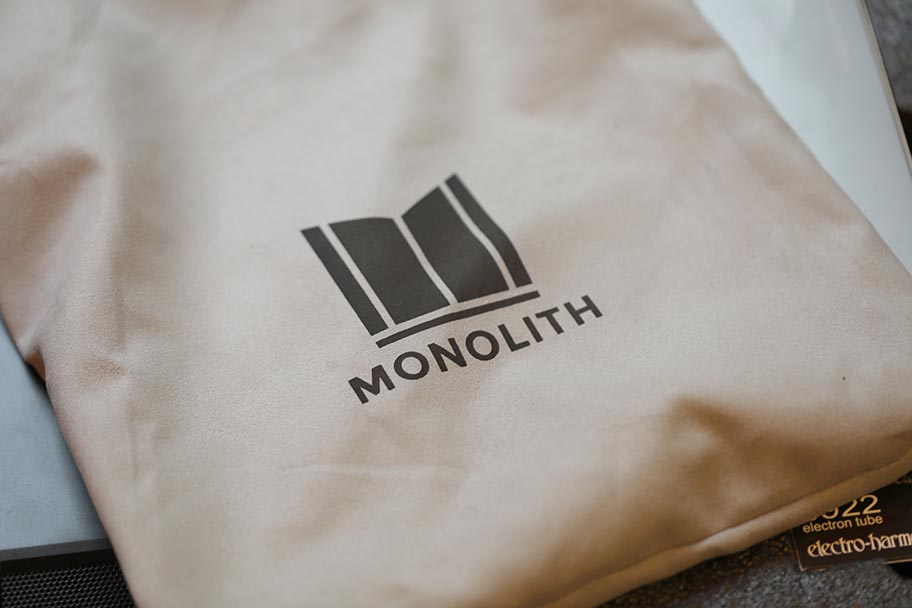
While we would have loved a simple remote control, it’s not a deal breaker. The only accessories you get with the amp are a simple power cable and a soft cloth bag - don’t ask us why a desktop amp needs a carry bag, but it’s nice to have around. We aren’t sure the two tubes count as accessories, but at least they come packaged well. And in general, the entire Liquid Platinum package works as it should, arriving without any frill or flare, the elements slotted into tough, shaped foam.
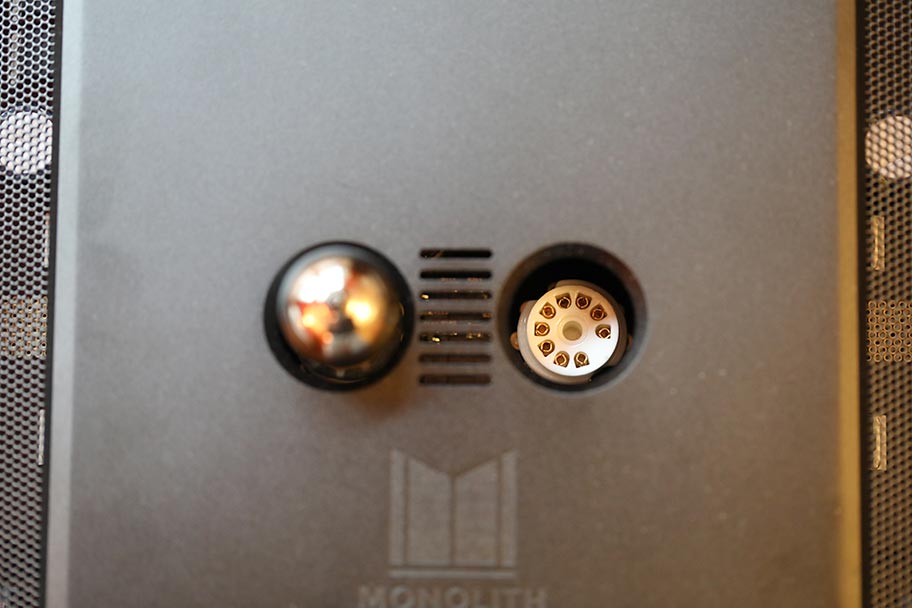
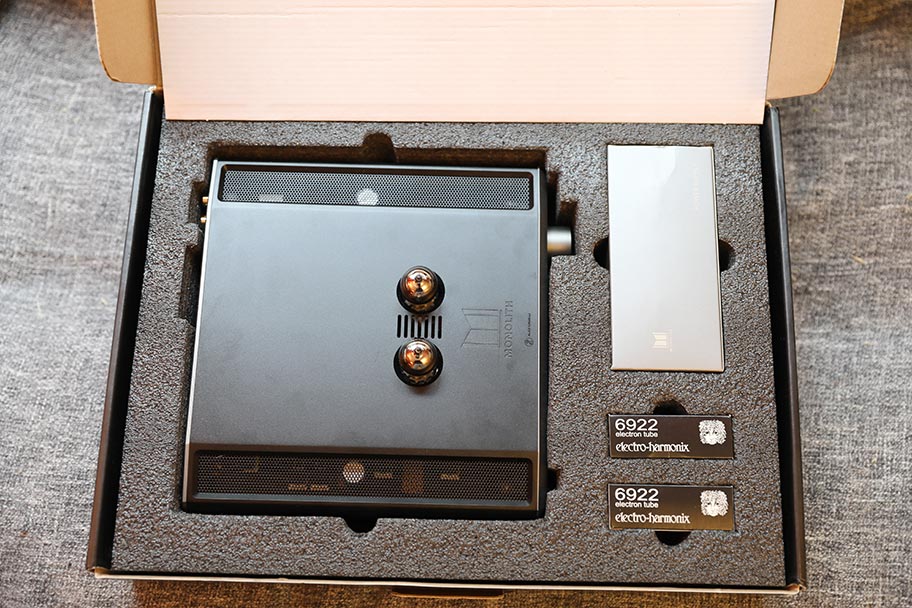
| Amps | Price | DAC* | RHI** | WPC*** | Dimensions | Weight |
|---|---|---|---|---|---|---|
| Monoprice MLP | $769 | No | 3-300Ω | 1.78 / 33Ω | 8.8" x 8.5" x 2.0" | 3.2lbs |
| Auris Euterpe | $1,699 | Yes | 32-600Ω | 0.9 / 32Ω | 7.3" x 2.7" x 2.1" | 9lbs |
| Burson Fun | $349 | Yes | 8-300Ω | 2.1 / 32Ω | 8.3" x 5.7" x 1.8" | 4.4lbs |
| Monoprice MLS | $99 | No | 3-300Ω | Unknown | 4.6" x 3.7" x 1.5" | 9.6oz |
*DAC = Digital-to-Analogue Converter
**RHI = Recommended Headphone Impedance
***WPC = Watts Per Channel
.jpg)
There are plenty of tube amps available in the sub-$1,000 range, and the one that came to mind when comparing the Monoprice Monolith Liquid Platinum was the Schiit Lyr. It has much better design and styling, which is hardly surprising. Schiit are known for their assured aesthetic. You get much more defined bass with the Lyr, as it’s a true tube amp, rather than a hybrid. It doesn’t offer quite the same functionality, as there’s no balanced output, and the sound quality is a little more rough and ready. It also gets quite a bit hotter than the cool-running Liquid Platinum. However, the Lyr is way more affordable, at $499 versus $770, and is a great tube pick.
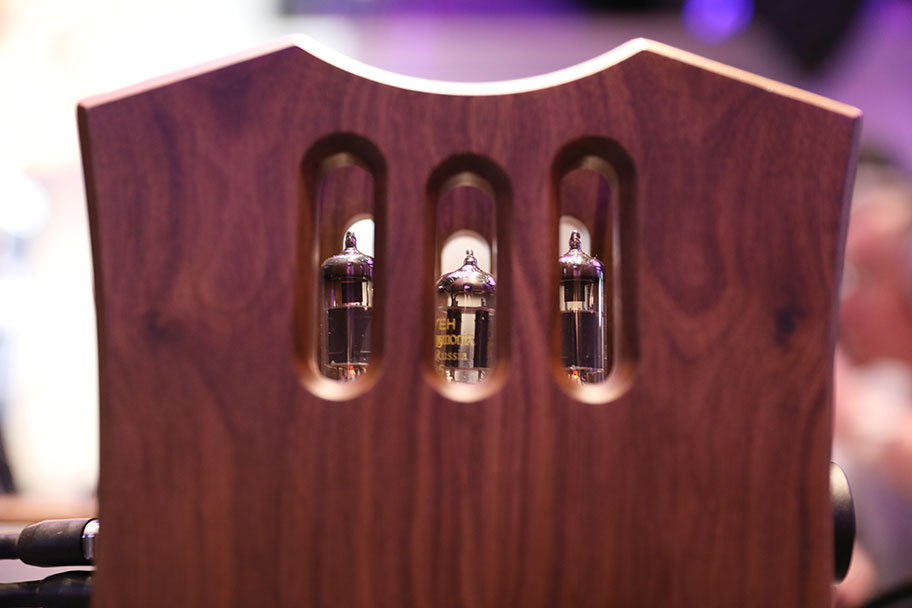
If you’re prepared to spend a little more money, then we recommend the superb Auris Euterpe. It’s a relatively new amplifier, a collaboration between Auris and headphone maker Kennerton, and costs over double the price of the Liquid Platinum, at $1,699. But oh, what a beauty. It’s slim design means it doubles as a headphone stand, and the wooden housing looks absolutely fantastic. The sound is glorious – we’ve tested it, and were blown away with clarity and depth. It’s the next step up in tube amps, and if you want something with some more flair, then this amp is the one to go for.
.jpg)
If you are particularly interested in tube amps, then we recommend trying out something like the Burson Fun. It’s a slightly more modern design than the Liquid Platinum, as it’s designed to slot into a custom built PC for gaming use. And while there’s no balanced output, you do get slick, punchy, and energetic sound, as well as the ability to swap out the internal circuitry to modify it. The Fun is highly affordable at $399, and we think it’s one of the better amplifiers currently available.
Finally, you may want to look at the Monoprice Monolith Liquid Spark. It’s a $99 amplifier that is a smaller version of the Liquid Platinum. There’s no balanced output, and no tubes, so you shouldn’t expect the same experience that you would get from the Liquid Platinum. What it has retained is the dull design, unfortunately. But that doesn’t stop it from being worth your time, especially if you’re looking for a quick way to boost your headphones sound. We really like this little monster, and although it doesn’t offer as many thrills as its bigger brother, it still does a great job.
See the Monoprice Monolith Liquid Platinum See the Best Headphone Amps